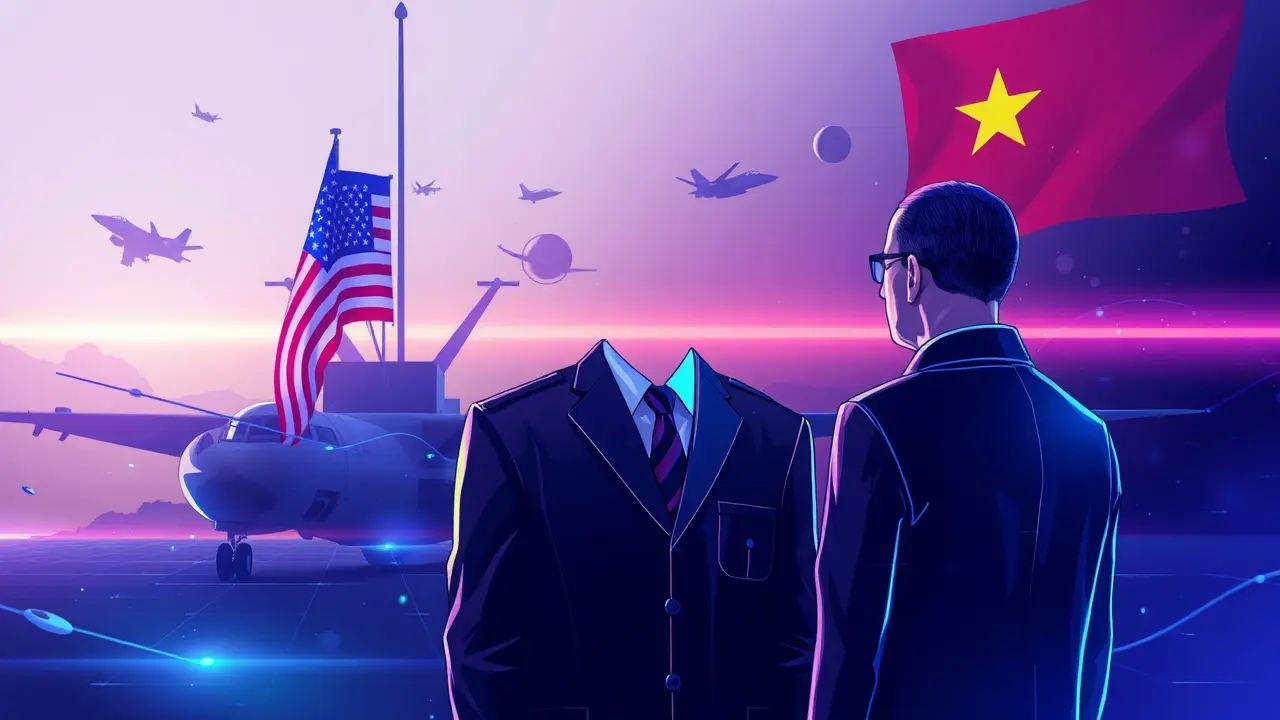
Politicsconflict & defenseArms Deals
US Seeks Deeper Military Ties and Arms Sales with Vietnam.
RO
Robert Hayes
1 day ago7 min read
In a strategic pivot that underscores the profound recalibration of global alliances in the 21st century, the United States is actively courting deeper military ties and significant arms sales with Vietnam, a nation with which it fought a protracted and brutal conflict a half-century ago. US Defence Secretary Pete Hegseth’s recent arrival in Hanoi, a visit laden with historical symbolism, was punctuated by his unequivocal statement that ‘deeper [military] cooperation will benefit both of our countries,’ a declaration made just prior to his scheduled high-stakes meetings with Vietnam’s top echelon of power: Communist Party chief To Lam, President Luong Cuong, and Defence Minister Phan Van Giang.This diplomatic offensive, unfolding against the backdrop of prolonged and delicate negotiations concerning the potential transfer of American military hardware to its former adversary, is not merely a bilateral matter but a critical maneuver in the great game of Indo-Pacific geopolitics, reminiscent of the historical realpolitik that has often reshaped the world order. The core impetus for this warming relationship is the shared, and increasingly urgent, concern over China’s expansive territorial claims and assertive military posture in the South China Sea, a vital maritime corridor through which a significant portion of global trade flows.Vietnam, which has its own longstanding and bitter maritime disputes with Beijing, finds itself in a precarious position, forced to balance its ideological and historical ties to its northern neighbor with the pragmatic necessity of securing its sovereignty and economic interests. For Washington, a strengthened partnership with Hanoi represents a crucial pillar in its broader strategy of building a networked security architecture to counterbalance Chinese influence, a modern-day equivalent of the containment policies of a bygone era, yet far more complex in its execution.The potential arms sales, which could include everything from maritime patrol aircraft to naval vessels and surveillance technology, are not just commercial transactions; they are instruments of strategic depth, designed to enhance Vietnam’s capacity for domain awareness and deterrence, thereby altering the regional military calculus. However, this burgeoning alliance is fraught with complications and historical baggage.The United States must navigate Vietnam’s stringent ‘Four No’s’ defense policy—no military alliances, no foreign bases, no partnering against another country, and no use of force in international relations—a principle born from a deep-seated desire for independence and a wariness of being a pawn in a larger conflict. Furthermore, Washington’s continued criticism of Vietnam’s human rights record remains a persistent irritant, a point of ideological friction that the Communist Party in Hanoi cannot easily dismiss.From a historical perspective, the image of a US Defense Secretary walking the halls of power in a unified Vietnam, discussing weapons deals, is a testament to how national interests ultimately transcend even the most bitter of past enmities, much as the United States’ post-World War II reconciliation with Germany and Japan came to define the latter half of the 20th century. The success of this diplomatic venture will hinge on nuanced statecraft, a mutual understanding of strategic red lines, and a willingness to compartmentalize disagreements for the sake of a larger, shared objective of maintaining a balance of power in a region teetering on the edge of renewed great power competition. The outcome of Secretary Hegseth’s mission will be closely watched not only in Beijing and Washington but in capitals across Asia and Europe, as it may well signal a decisive and enduring shift in the architecture of security and influence in the Indo-Pacific.
#Pentagon
#Vietnam
#military cooperation
#arms deal
#diplomacy
#US Defense Secretary
#featured
Stay Informed. Act Smarter.
Get weekly highlights, major headlines, and expert insights — then put your knowledge to work in our live prediction markets.
© 2025 Outpoll Service LTD. All rights reserved.